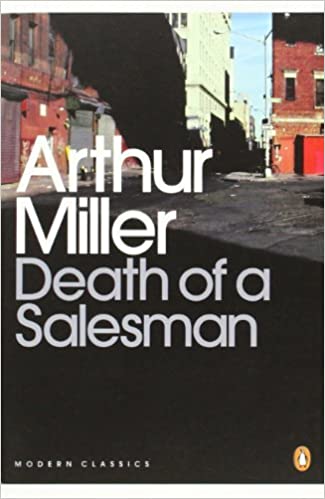Death of the consultation: is it too late to listen?
About the author
Fiona MacLeod prepared this article as part of a CIPR professional qualification assignment while studying with PR Academy.

In the play, Death of a Salesman, Willie Loman struggles to accept his failure which is the fall out of his son discovering his affair. Willie’s dreams of forging a successful family dynasty are thwarted as his son loses faith in him. It is a play about the importance of trust and how, once lost, it cannot be regained.

As a newly appointed education reporter on a local newspaper nearly 20 years ago I covered a raft of school closures proposed by the local authority. There would be a consultation.
I attended dozens of angry public meetings in school gym halls, took numerous phone calls from furious parents, campaigns were launched and petitions created to save the schools. I couldn’t understand the level of anger. There would be a consultation – the council would listen.
A year later, every school proposed for closure had closed as set out in the original plans. The parents had said from the start they had no faith in the process of consultation – they didn’t believe their voices would be considered. The local authority had to listen. But they didn’t need to act on what they heard.
Around the same time, in 2003, Prime Minister Tony Blair launched “The Big Conversation” to find out what mattered to voters. Described by the government as the “biggest ever consultation exercise in the UK”, three years later, however, The Guardian was describing it as a tightly controlled conversation with little result achieved.
A year after this, Stephen Coleman, Professor of e-Democracy at the University of Oxford noted in the Political Quarterly that a House of Commons Public Administration Committee inquiry had recently heard that only 26 per cent of responders felt consultations had any influence. Coleman also reports that, giving evidence to the inquiry, Dr Sue Goss, Director of Public Services Development at the Office of Public Management, said organisations might be holding consultations, but were “failing to respond effectively” which risked the relationship between people and government. Coleman concluded that politicians must demonstrate that they really care what the public say.
Despite these criticisms, two decades on, the consultation seems as popular as ever. A quick google news search on the word ‘consultation’ results in an apparently endless raft of consultations on everything from extending licencing hours for the Queen’s Platinum Jubilee to outdoor weddings and even expectations while in police custody, and that’s just the UK Government. Various studies have found that consultations are important to enable people to be engaged in the future of their communities and that those consulted consider themselves as both decision makers and valuable sources of information, in short they are a key part of our democratic system.
Many employers are also looking to start their own consultations on a variety of topics from ways of working post-Covid, to meeting the Scottish Government’s target of being net zero for all greenhouse gases by 2045.
To facilitate these kinds of institutional change, all staff and colleagues would need to take and make decisions which go towards meeting these targets but engagement levels with staff surveys can be low.
Suddenly the question of how to effectively communicate with all staff and stakeholders becomes crucial – do surveys on specific topics such as the environment really reach everyone in an effective way or do they just address a small niche audience? Is everyone listening?
A clear danger with consultations is that they reach only the already invested and the proactive.
A study of consultations on city regeneration in Sheffield in the 1990s found that disadvantaged groups neither benefited from learning about the plans nor in influencing them.
Today, traditional large public meetings have been replaced by workshops and digital alternatives intended to ensure the louder voices don’t swamp the quieter ones in consultations. However, the Covid-19 pandemic has shown us that digital is not the panacea for universal communications.
Covid had a transformational effect on employer internal communications. From a standard operating week of 9-5 Monday to Friday with staff onsite, suddenly lockdown in March 2020 meant thousands of staff were spread far and wide – sometimes around the world.
Email and webpages had seemed the latest technology. Lockdown kept us at home, but like a modern teenager sent to our rooms, it was no longer a sequestration from the world – we had email, we had laptops, wifi at home and endless capacity to work remotely, flexibly and with mobility. A study focused on Italy, a country struck early and hard by Covid-19 in 2020 with a strict and lengthy lockdown, showed technology was a social lifeline and helped people.
However, the cracks soon began to show – the technology was available but had been mired in a working world, often implemented by non-digital natives who still thought in an office-bound central, top-down environment.
New issues emerged – communications across time zones, when was best to send communications? How to ensure certain sections of the community aren’t bombarded with irrelevant messaging e.g., advice to those overseas regarding quarantine not relevant to those remaining in the UK. How to communicate with key staff who remained onsite rather than working from home? More than anything, it became clear there were many who seemed unreachable.
All that technology, previously netted by the constraints of a traditional working week in UK time, had been asked to spread its wings and fly free. But issues began to appear. Suddenly the truth was in stark relief – sending an email to staff lists or tweeting wasn’t the answer to internal communications after all. Like Icarus, some internal communications strategies, once exposed to the light, fell to the ground, scorched and failed.
A 2016 study had warned us younger people aged 13-24 were abandoning email and finding alternative communication methods such as messaging apps, while older people were stuck in a default romance with email trying to replicate the desktop experience on a mobile phone rather than seek completely new ways to communicate.
A 2020 survey from Creative Strategies found younger people more likely to try new software and technology while older workers accept those imposed by their employer, hence older generations using Microsoft more than younger users who take advantage of a variety of technology options. The same study concluded that younger people do not see email as a collaborative tool in the same way as the over 30s do.
Digital natives, those born post these inventions who have known nothing else, not so much decline to default to traditional communication methods but, more importantly, don’t see them as the endgame as perhaps older generations do.
The modern office culture of sending emails into the ether, no longer your problem until you receive a reply, needs to change. It is not the intended audience’s responsibility to read what is sent to them on channels they spurn, but ours to find new ways to communicate with them.
If identifying how we “speak” effectively helps us move away from email and find alternative methods of communicating, particular with younger generations, how do we convince them to actually participate in a consultation exercise? How do we convince them that we are really listening?
Jim Macnamara’s 2015 study of organisational communications found it overwhelmingly one way, with around 80 per cent, on average, of corporate communications’ time being spent on disseminating information and most being very poor at listening. Indeed, he describes there being a “crisis of listening” it is done so rarely.
Recent societal campaigns have seen organisations such as universities listen and make decisions unthinkable even a couple of years ago. The Black Lives Matter campaign called on Edinburgh University to change the name of one of its most famous buildings because it was named after someone with links to the slave trade. Professor Tim Luckhurst, principal of South College at Durham University was barred from duties after pressure from students when he defended Spectator Associate Editor Rod Liddle’s controversial speech at a university event. And Professor Kathleen Stock eventually resigned after students called for her dismissal after she expressed views on transgender people. The importance of listening is clear.
If new life is to be breathed into consultation, then not only must we find better, less didactic and top-down ways to talk, but we must all find a way to begin to listen.
It will be a long journey as there seems little expectation of being heard currently from those we consult. Listening cannot be the passive, secondary exercise it has been previously. If we do not start to actively listen, we will be talking to a silent empty room – if we are not already.
Organisations are increasingly under pressure to listen to their consumers, to behave responsibility and set an example e.g., avoiding slave labour overseas, adopting fair trade commodities, divesting from carbon intense industries, acting more sustainably and waking up to the interests of the woke generation. This could be the most innovative and radical change we undergo in communication terms and yet, if handled correctly, will go unnoticed.
In Death of a Salesman Willie cannot regain his son’s trust and so commits suicide in hope that his life insurance payment will “buy” back the ambition of his son he had dreamt of. Perhaps, the traditional consultation must also fall upon its sword and be reborn.
We must seek out and find new ways to communicate with various stakeholder groups, such as using apps with younger people, and genuinely listen and act on what we hear. We must avoid the dangers of broadcast mode and enter a new conversation. Perhaps then the phoenix of consultation can rise from its own ashes – it must, for our democracy depends upon it.